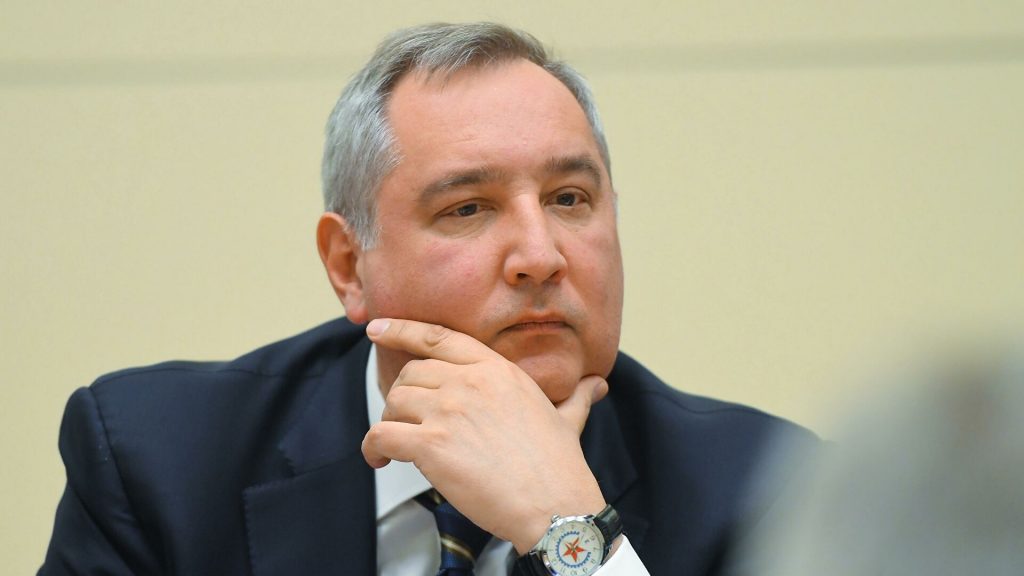
By Kristin Fisher, CNN
(CNN)Despite threatening to pull Russia out of the International Space Station prematurely, the head of the country’s space agency is now promising to remain NASA’s partner at least until the orbiting outpost is eventually retired.
“This is a family, where a divorce within a station is not possible,” Dmitry Rogozin told CNN in his first interview with western media since becoming Roscosmos’ director general.
Divorce certainly seemed possible in June when Rogozin made headlines for threatening to withdraw from the station unless US sanctions on Russia’s space sector were lifted. Rogozin is also under personal US sanctions for his role as Russia’s deputy prime minister of defense during his country’s 2014 annexation of Crimea from Ukraine.
“Either we are working together and then sanctions should be lifted immediately, or we won’t work together” and Russia will deploy its own space station, said Rogozin in June, according to Russian state-owned media TASS.
Now Rogozin appears to deny ever making those threats in front of Russia’s lower house of parliament.
“I think there is a problem in interpretation. I, most likely, did not say that,” Rogozin told CNN, speaking Russian. His words were translated by an interpreter hired by CNN.
“It’s just that we’re talking about how we can continue our comradery, our friendly relations with our American partners, when the US government is implementing the sanctions against the very same organizations which supply the International Space Station.”
Another test for the US-Russia space partnership
It’s a relationship that’s being tested politically and in orbit.
In July, Russia’s newly docked Nauka module accidentally fired its thrusters, spinning the space station out of control. At the time, three NASA astronauts, two Russian cosmonauts, a Japanese astronaut and an astronaut with the European Space Agency were on board. Rogozin admits “we did have a problem,” and he blames it on human error.
“The equipment does not break down on its own,” Rogozin said. “For 21 years, we have not done anything like this. An older generation, who knew how to dock a complex structure like this, has retired.”
The incident has raised questions about Roscosmos’ reliability as NASA’s top partner on the International Space Station. But now that the 23-ton Nauka — which adds Russian laboratory space and sleeping quarters — is there and working, Rogozin says it is “the guarantee” that Russia will have the “technical capacity for station operation up until the time when it will reach the end of its service life.”
The US and Russia have been partners in space ever since the Apollo-Soyuz Test Project in 1975, when an American Apollo spacecraft docked with a Soviet Soyuz capsule, signaling the end of the first space race.
“I think that the cooperation with the Russians, which has been there ever since 1975, will continue,” said NASA Administrator Bill Nelson, speaking at the annual Space Symposium in Colorado Springs on August 25.
The US tried to extend this partnership in space to the moon with NASA’s new Artemis program. But so far, Russia has refused to participate.
“For this to happen, we request dignified conditions from NASA. We don’t want to be assistants or servants,” Rogozin said. “The main condition is equal rights when discussing issues and joint decision making. That’s what we have today at the International Space Station.”
A relationship with another country too
Rogozin insists Russia wants to preserve its partnership in space with the United States. “We respect our partners in the US,” Rogozin said. “We are friends.”
But in June, Russia also announced plans to build a base on the moon with the world’s newest superpower in space: China.
Republican Sen. Jerry Moran of Kansas, the ranking member on the Commerce, Justice, and Science Appropriations Subcommittee, says actions speak louder than words.
“Russia sent a clear signal in creating an alliance with China for lunar exploration rather than continuing its historical partnership by joining the United States,” said Moran, speaking at the Space Symposium.
Pressed if Roscosmos is prepared to potentially throw away this decades-long partnership with NASA, Rogozin was noncommittal.
“We are pleased that you are looking at us as some sort of bride, who is trying to cheat on one groom and pick another one, but this is not the situation as it appears,” Rogozin said.
Rogozin wants Roscosmos to partner in space with both the US and China. “If we are not able to work with the US — not because of our fault, and I think this can be changed — but if this is not taking place, in order to divide the responsibility, risks, money, we need, naturally, another partner,” Rogozin said.
Nelson is planning to meet with Rogozin, likely in Russia, sometime later this year.
Asked to respond to Rogozin’s comments, Nelson said, “I look forward to continued cooperation with Roscosmos on the International Space Station until 2030 and into the future.” But Nelson did not address the specific conditions Rogozin is demanding before Russia will sign on to the Artemis program.
At the end of a nearly hour-long interview, Rogozin said he had one final “big request” for the United States to preserve this decades-long experiment in space diplomacy.
“America is a large country. As a big country, it must be kind and wholehearted. It must propose conditions for its Russian partner, far smaller by the size of its population, and by the size of its economy. If these conditions will be dignified to us, we will accept it. The ball is in NASA’s hands, the US’ hands now.”
